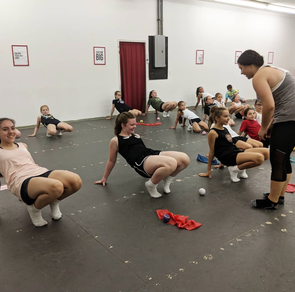 Okay, so, maybe stretching isn’t part of Irish dance’s technique per say, but it is a key component to every dancer’s success. It’s also the most often and easily skipped part of a dancer’s at-home practice—especially younger dancers, as younger muscles are more elastic (as we age, our muscles begin to shrink and lose mass.) However, that doesn’t mean stretching is less important for younger dancers! Stretching remains the primary way dancers can protect their bodies from the fatigue and strain that can build up over a lifetime (or even just their first few years!) of dance, and help prevent both minor and major injuries. But what are the benefits of a regular stretching practice? First off, the key word is regular. Researchers make clear distinctions in their findings--occasional stretching can actually decrease muscle strength if immediately followed with activity, while regular stretching enables muscles to work “most effectively.” But that’s only the tip of the proverbial iceberg. While the obvious benefit is an increase in flexibility (and what dancer doesn’t want that?), it’s also proven to improve performance in all physical activities as it increases joint mobility and, as we’ve mentioned, prevents injury. This is because stretching increases blood flow to your muscles as you temporarily lengthen your muscle fibers. Here’s the number one tip for stretching, one we could shout from the rooftops if we could: stretching is NOT a warmup! Your muscles should be warmed up (some low intensity cardio where you’re not overextending yourself is all it takes) before the stretching starts--stretching cold muscles can potentially cause strain, pulls, or tears. Stretching after dancing is just as important—this is when your muscles are at their warmest. This is a dancer’s best opportunity to really increase flexibility without causing undue strain, as this would be the most pliable your muscles are during a workout. 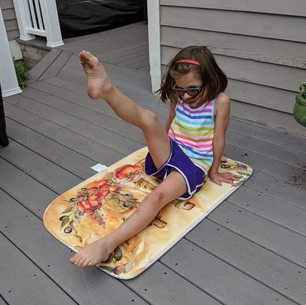 Other tips? While genetically most dancers have one side they favor and are most flexible on, Irish dance strives for symmetry and your stretching should too! Make sure you’re repeating each side-specific stretch on both sides, while focusing on major muscle groups and your most used joints. This will also help with a dancer’s balance! While your dancer stretches, we’re looking for smooth movements with good posture that are held for 30-60 seconds. No bouncing allowed, as this can cause both injury and muscle tightness—and that smooth motion and hold should under no circumstances be painful. What you want to feel is tension, not pain! And don’t forget: make sure your dancer’s stretching routine is sports-specific. That means making sure the stretches they’re doing aren’t just the generic ones they might learn in P.E. class, but a stretching routine that benefits Irish dancers and the ways they move their bodies specifically. There are innumerable resources specific to Irish dance out there, but, of course, Miss Courtney and our SRL instructors are a wealth of knowledge of what stretch to do for specific issues, and the stretches our dancers learn in class will always be a good idea for at-home practice. Our most loved resources here at SRL include Target Training Dance (here’s an Irish dance-specific stretching YouTube playlist from them!), as well as Irish Dance and Culture Magazine (here’s a great article!) and Ready to Feis (and another!), but always feel free to share what you find in our parent and dancer Facebook group—it’s a community effort! 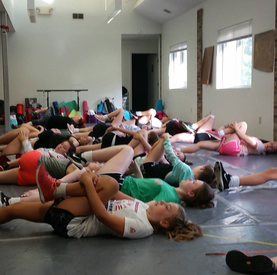 Does your dancer get bored while stretching and tend to rush through it? Remember there’s more than one kind of stretching! While we’ve largely been discussing tips for static (i.e. holding a stretch) stretching in this post, dynamic stretching is recommended by many as one of the best options for before dancing (while static is best utilized after dancing, when the muscles are their warmest. Dynamic stretching is a series of controlled, activity-specific movements performed at a gradually increasing intensity to help prepare your muscles for the activity you’re about to do. Check out Celticore Pilates for a great workout that includes dynamic stretching, for example! The most important thing to remember? Keep it up! Making stretching a regular practice—whatever that practice looks like, as long as it’s done safely and with Irish dance in mind—is the primary factor in whether stretching will be beneficial to your dancer. It’s something that can be done every day, in a variety of places and situations, even if there isn’t time to practice their slip jig. Making it a part of your dancer’s everyday life and practice will only be a benefit! This post is part of a series. Read our last technique post, all about timing, here. Check out the blog every Monday and Thursday for more posts about Irish history, dance culture, community news, and spotlights on our dancers, staff, and families—among other fun projects! And don’t forget to dance along with us on both Facebook and Instagram.
0 Comments
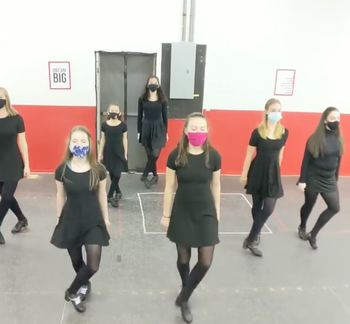 Click the image to see some stellar timing from some of our SRL dancers! Click the image to see some stellar timing from some of our SRL dancers! Last time we did a technique review, we covered rhythm. So you may be asking yourself…isn’t timing the same thing? While the two are definitely related, not quite! While rhythm refers to a dancer’s synchronization with the music, timing refers to the pace at which a dancer performs individual movements. Or, to say it another way: rhythm is how the pattern of movements correlates to the music’s pattern, while timing is the relationship of one movement to another. You can think of it as pacing too…but it’s a brain-twister! The truth is, it’s hard to separate timing and rhythm, and issues with one will generally cause issues with the other. Going back to the “Happy Birthday” analogy from last time—someone with rhythm issues won’t be able to stay on beat with everyone singing, while someone with timing issues may extend one word too long and then maybe speed up singing another part of the song. In Irish dance, especially in the more advanced levels, individual movements have individual timings (think of a sliding movement in a hornpipe dance versus fast-flying feet in a slip jig) and while keeping to the beat (rhythm) is one struggle, timing those individual movements is another. Essentially, one move may be meant to take two beats of the music but the dancer does it in one or three. There’s two separate kinds of timing issues on a basic level: too fast or too slow. While too slow is probably easiest to see with the naked, non-dancer eye (as it skips over too many beats in between or during movements)—too fast is equally common and might manifest itself with a dancer finishing a phrase (i.e. a set of movements) and then needing to pause to begin the next phrase. Sometimes timing issues stem from nervousness or difficulties with a particular move or phrase, and sometimes it’s an inability to hear the music. Dealing with timing issues, like rhythm, needs to be looked at on an individual basis, but there are a few things you can help with at home! First off, if it’s an individual movement issue, YouTube is your best friend! Look for a video of the move done correctly, then slowed down and explained, and then put to music that your dancer will be able to watch over and over again outside of the classroom setting. Sites like Target Training Dance or Irish Dance Magazine’s YouTube are amazing resources—Irish dance may be a small world, but it’s a supportive one, and there’s a dearth of information out there! When trying to figure out how multiple movements fit together (like when you learn a new step), we always recommend that dancers record a video of it slowed down with no music as well as a video with the step danced to music. Back in the day, we used tape recorders of our teachers singing or lilting steps before cameras were built into every phone! 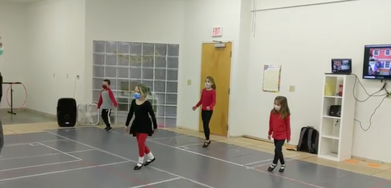 Timing is emphasized from day one, as solid timing is one of the easiest ways to move up competitive levels—click the image to see a Beginner class learning to time their movements! Timing is emphasized from day one, as solid timing is one of the easiest ways to move up competitive levels—click the image to see a Beginner class learning to time their movements! It may also be the type of music that’s the issue—perhaps it’s specific instruments (some dancers can hear a fiddle, but not the downbeat from an accordion, for example) that cause confusion or a music with a particular beat (to review the differences in Irish dance music, check out this past post!) This problem has the same suggestions for home practice as rhythm issues (see that post from last week here)—see if your dancer is able to clap along to the beat of the music. If they’re not able to hear the music they won’t be able to feel the music while they dance, which will throw off the timing of their moves. Musicality is a learned skill for many dancers and the biggest key for improvement? Consistent practice, determination, and possibly a private lesson or two for good measure (as small as SRL classes are, sometimes a little one-on-one time is needed to better suit one dancer’s particular learning style or better determine where the disconnect is.) At home, they can try dancing to the beat of a metronome or simplified beats (stripping back the music to simply beat will make is easier to hear!) You can also try singing steps alongside the music or using your hands to keep time to the music on the floor to help your dancer visualize the beat—every kid learns differently! The important part is to not give up, and ask your dancer’s instructors for help as needed! This post is part of a series. Read our last technique review, all about rhythm, here. Check out the blog every Monday and Thursday for more posts about Irish history, dance culture, community news, and spotlights on our dancers, staff, and families—among other fun projects! And don’t forget to dance along with us on both Facebook and Instagram. While “rhythm” is obviously a key part of any dance discipline (or casual dancing, for that matter!), Irish dance’s demands on a dancer’s rhythm are more complex than average. As dancers move up through the levels and start adding more types of dances to their repertoire, they’re also adding new types of music with a variety of rhythms they’ll need to be able to identify and dance in time to. While we’ve covered the different types of music used in Irish dance in a previous post (check out our post here! or a few other resources: here or here!), we’re here tonight to help explain the concept of rhythm in Irish dance and how to troubleshoot any rhythm issues! Rhythm, broadly defined, is the ordered recurrent alternation between sound and silence (in music) and (in dance) the movements that coordinate with that alternation. You may have run across Miss Courtney’s explanation of rhythm in class before—she likes to compare it to “Happy Birthday.” We all know how to sing “Happy Birthday,” and all do it unison every time. That’s because we inherently know the rhythm of the words, even without backing music. Rhythm in Irish dance is a little more complicated as there’s both movements and music involved, but the principal holds: when you understand and can hear the rhythm of the music your movements are in tandem with those beats. Or, as our dancers would probably say: iykyk. It’s easy to think of rhythm as a hard shoe-specific issue, and it’s true that it’s more noticeable to the casual observer when a hard shoe strikes at the wrong moment than your ghillies. But it’s not true of the adjudicators or your teachers—they’ll notice, for sure! Rhythm is equally important in soft shoe as it is in hard shoe. Dancers with rhythm issues will still be able to perform their dances in full, and will possibly still end in the right moment, making them think their rhythm is intact. However, rhythm has more to do with the individual style and timing of each movement in conjunction with the music—i.e. a heel strike on a down beat versus in the middle of a musical phrase. 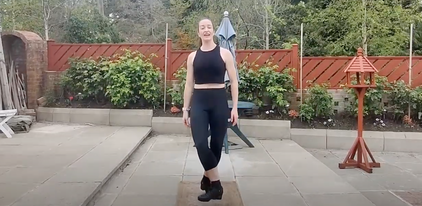 Click the image for a video with 3 simple drills to help improve your rhythm! Click the image for a video with 3 simple drills to help improve your rhythm! If a dancer is struggling with rhythm, the first step is to determine if they can hear the rhythm of the music. An easy test of this is having them clap along with it—some people simply can’t naturally hear the rhythm of the music and can’t follow, say, the beat of a jig (fast fast slow or up up down.) This is a skill you'll see practiced in our earliest levels (Tiny Jig and Pre-Beginner especially) and while it may not look like dancing, it's a precursor to this very important aspect of Irish dance! If clapping isn’t working, trying having them count the beats out. That may not work either, and it can be difficult for some dancers to realize they can’t accurately hear the rhythm of the music. Musicality is often a learned skill, and can usually be improved with patience, diligence, and help! A private lesson (or a few) for dancers struggling with rhythm is always a good idea, particularly if they have a specific dance they’re struggling with. Private lessons for rhythm issues give instructors the time to break down the dance and even record it for further study for the dancer without taking away from class time. But there are exercises you can try at home as well (besides constant practice, which is always a good idea!) This suggestion comes from feis circuit musician and former Irish dancer, Sean O’Brien—his fix for improving your rhythm is to practice your dances alongside a metronome instead of the music, saying: “This is the simplest way to strip music back to its fundamental, unchanging beat. Sometimes people can be confused by the layers of instruments, and a metronome helps to distinguish the underlying tempo.” Rhythm is a difficult concept to explain in words, and there’s always an ongoing debate about whether or not it can actually be taught. Our verdict here at SRL? Miss Courtney herself struggled with rhythm early on in her dance career, but (clearly!) overcame it—so there’s probably no better place to work on it than here at SRL! This post is part of a series. Read our last technique review post, all about extension, here. Check out the blog every Monday and Thursday for more posts about Irish history, dance culture, community news, and spotlights on our dancers, staff, and families—among other fun projects! And don’t forget to dance along with us on both Facebook and Instagram. 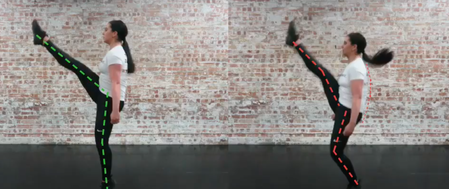 Welcome back to technique review, where we cover the most essential principles of Irish dance that every dancer needs to practice, train, and condition for—from Beginner to Championship level! This week, we’re taking a look at extension, a term which specifically refers to the line of the leg while dancing. It may sound simple, but it’s anything but! Proper extension for Irish dance is a little more complicated than standing up straight—it refers to the leg being fully straight and the knees pulled up at all times. The term “knees pulled up” can be a little confusing for non-Irish dancers, but signifies the muscles literally pulling up as you rise on your toes and extend your knee fully (it’s the correction Irish dance teachers love to yell when you bend your knees!) Once you reach the higher levels of Irish dance, this also refers to the dancer using the space on the stage to their full advantage, reaching as far as they can to “fill” each movement. While fully straightening your leg seems like something we all do every day, it actually requires a particular type of flexibility—most notably, the hamstrings. If you’re getting notes back from the adjudicators (or your teachers) noting that you’re “sitting on your knees,” it means your back leg is bent while dancing and you’re most likely dropping your heel. Tight hamstrings are the most likely culprit—it probably feels like you’re fully extending, even when you’re not! This isn’t a problem limited to Beginner dancers, as it’s something that can follow you into the upper levels if not addressed. While all our upper level classes begin with exercises meant to increase flexibility, hamstring flexibility doesn’t have an overnight fix. Like everything in Irish dance, it takes patience, dedication, and constant practice—i.e. daily stretching over a long period of time. Remember to NEVER stretch cold—always warm up first for 5-10 minutes—and make sure to hold each stretch for 40-60 seconds, focusing on each stretch as you complete the action. Need some new hamstring stretches? We love Target Training Dance for great tricks and tips specifically tailored to Irish dancers! 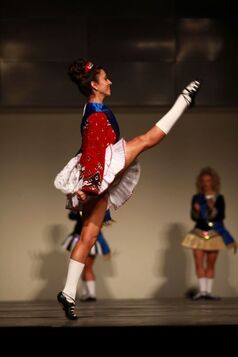 An example of full extension in a competition setting—this isn’t referring to the height of the kick, but the line of the legs An example of full extension in a competition setting—this isn’t referring to the height of the kick, but the line of the legs But hamstrings aren’t the only muscles that need to be addressed! A dancer’s glutes and quads are equally important, as these are the muscle groups you’re most actively engaging when you’re “pulling up” from your knees. The stronger your glutes and quads, the more focus you’ll be able to commit to this part of your form and the more natural a fully extended leg will become. But remember: leg strength and flexibility need to be balanced with core strength for this to work—Irish dance is a whole body workout. Click any of the links throughout this article to see a wide variety of exercises for everything from your hamstrings to your core! (That’s right, every single link here is another exercise (or set of exercises) to help with extension! And here’s one more for good measure.) But why is extension important? It’s not only that proper form requires a clean line from a dancer’s leg—there’s long term health and safety risks, as well. An estimated 80% of Irish dance injuries stem from overuse—which doesn’t mean your dancer is dancing too much, as much as it means they need further conditioning, a balance of strengthening and stretching in equal measure. It’s imperative for all Irish dancers to condition outside of their regular class time in order to avoid overuse injuries and be able to continue to improve. This article even found links between hamstring flexibility and the ability of a dancer to advance through the competitive levels. Whether you’re just starting out or have a room full of medals, remember: extension is key! (And so are the exercises to help improve it!) This post is part of a series. Read our last technique post, all about arching, here. Check out the blog every Monday and Thursday for more posts about Irish history, dance culture, community news, and spotlights on our dancers, staff, and families—among other fun projects! And don’t forget to dance along with us on both Facebook and Instagram. As Irish dance is an artistic sport that always striving toward the ultimate goal of flawless technique, we’re back with another aspect to concentrate on and work on at home. The term “arching” is a pretty descriptive one even for non-dancers—and from day one in dance class (across disciplines) every dancer in history has heard the same refrain, on endless repeat: “Point your toes!” But arching is so much more than simply pointing your toes! First off, a more apt description than “pointing your toes” would be “pointing your feet.” True arching is an extension of the line of your leg, meaning curling the toes is only the beginning. Your ankle must also become a part of this extension, with your ankle continuing the line in a movement not unlike when you’re pressing down on a car pedal. This clean line extends through the rounded top of the foot and through to the toes to make one seamless arch. Mastering extending both the ankle and the arch of the foot simultaneously can be a struggle for some dancers, usually choosing one over the other—watch out for that! An even more critical issues to watch out for in a dancer’s arch is sickled feet. Sickling your feet is the rolling of the ankle either in (pronating) or out (supinating.) This can be a part of a dancer’s natural anatomy. The easiest way to see if your natural tendency is to sickle your feet is to have someone look at your feet from the back while you stand straight—if the sickling is severe it’s best to consult a doctor as injury can result, whether or not you’re dancing! But, most sickled feet happen when a dancer “overpoints.” While a strong point is, of course, a need for any dancer, overpointing is the over-extension of the foot and toes, the force of which comes from the ankle and thus causes a dancer to pronate or supinate. Not only does this break the clean line of the arch you’re looking for, it can lead to weakness in the ankles and imbalanced muscular development. Another anatomy-based issue that can affect someone’s instep (another term for arch!) while dancing is being born flat-footed (though one can also develop flat feet!) This essentially means your feet, when you’re standing straight, are literally flat to the ground from every angle. Once again, flat feet don’t only cause a problem for dancers—they can lead to increased stress on your knees, back, and spine whether or not you know how to jig!
But how to improve? One thing to keep in mind is what you’re trying to strengthen. Make sure any additional research you do is tailored to the specific issue you’re combatting—pronation versus supination, etc.—or you can end up exacerbating the problem. But if it’s general arch and ankle strength you’re looking for, theraband exercises are still the go to. Don’t worry if you don’t have one! There’s plenty of exercises you can do with household objects—like Miss Courtney’s suggestions: laying a towel on the floor and using your toes to scrunch it together or putting Legos, marbles, etc. on the floor and using your toes to collect them! (Which also sounds pretty entertaining.) Or check out this list of easy household exercises that Feis America Magazine contributor Caitlin Buck has put together! This post is part of a series. Check out our last technique post, all about height on toes, here. Check out the blog every Monday and Thursday for more posts about Irish history, dance culture, community news, and spotlights on our dancers, staff, and families—among other fun projects! And don’t forget to dance along with us on both Facebook and Instagram. 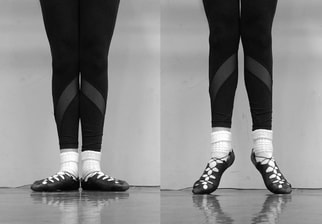 So far in technique review we’ve covered turnout, crossing, and posture—but we’re not done yet! We’re moving away from the arms and shoulders this week and returning to the feet as we discuss one of most important aesthetic and technical components of Irish dance: height on toes. As almost all movements are performed on the balls of the feet, maintaining height on your toes is necessary to properly execute all dances! While the term “height on toes” may conjure up the image of a ballet dancer in pointe shoes, what we’re referring to here is the ability of an Irish dancer raising themselves fully on the balls of their feet, not the tips of their toes. Though there is an exception to this rule (the “heel” or “stamp”) where the foot makes full contact with the floor, outside of this an Irish dancer must never let their arch or heel touch the floor! And yes, that even includes landing jumps! This can be particularly challenging for dancers while performing in hard shoe. Though the fiberglass heels of today’s hard shoes are much lighter than their predecessors, they can still often feel very heavy, especially to beginners, leading to dropped heels while dancing. This is an even more glaring issue when in hard shoe (as opposed to soft ghillies) as it’s not just improper technique, but leads to unnecessary additional sounds that can disturb your rhythm! As dancers move up through the levels, they’re not only expected to stay on their toes, but that their height on toes is so extended that they’re dancing well up on the balls of their feet, close to the base of their toe. Thus, performing strengthening exercises for your calves and feet outside of class is one of the keys to improving as an Irish dancer across the board. While there’s numerous theraband exercises that can help with conditioning your calves and feet, and single leg calf raises are a good workout as well, Miss Courtney recommends “doming” as the best possible way to help increase your arch strength and shaping. 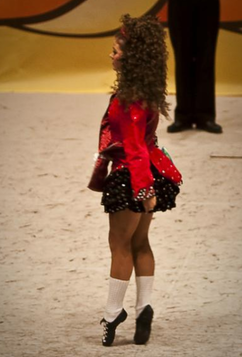 Doming is an exercise (see it in action here!) that not only works the larger muscles of your foot, but aims to involve the smaller, intrinsic muscles that are buried deep within the bottom of your foot. Strengthening these smaller muscles helps stabilize the joints of the foot as a whole, providing a more stable base for dancers to jump, jig, and move. You know how core strength is what keeps us upright? Think of this as core strength for your foot! (Check out some more tips from Irish Dancing & Culture magazine here and from Target Training Dance—a great resource--here.) It’s incredibly important for Irish dancers to make sure their feet and calves are at full strength, and not just because a lowered heel could knock you down a place during judging. A study in The Journal of Athletic Training in 2017 reports that fatigue in Irish dancers leads to heel drops and thus an increased risk of lower limb injury. Increasing the stamina of your height on your toes is imperative to help avoid the arch and heel release that can lead to injuries such as stress fractures, ankle sprains, and plantar fasciitis, among others. But, like anything else in life, preparation is the best way to avoid any problems, so get your dancer working on calf and foot strength sooner rather than later! This post is part of a series. Check out our last technique post, all about posture, here. Check out the blog every Monday and Thursday for more posts about Irish history, dance culture, community news, and spotlights on our dancers, staff, and families—among other fun projects! And don’t forget to dance along with us on both Facebook and Instagram. Technique Review: Posture What does the word “posture” conjure for you? A young lady at finishing school balancing books on her head? Well, if you’re an Irish dancer you might have a different answer! When most people think about “posture” for Irish dance, the first thing that comes to mind is the unique form Irish dance utilizes: an unmoving, straight spine as their feet are flying. But good posture isn’t about just not moving your upper body—there’s a lot more to it than that! Good posture in other forms of dance is a little simpler than Irish dance (what isn’t,) with the term generally referring to an alignment of the spine and body—from the top of the head through the heels. Good posture isn’t just about correct technique--it’s about putting the least amount of stress on your ligaments, muscles, and body in general while performing an activity. There are benefits to maintaining good posture, whether or not you’re a dancer—less wear on bones and joints, decreased back pain and spine issues, and helps prevent muscle fatigue—but for dancers the stakes are even higher. Not only will the adjudicators notice incorrect posture (and dock you!) but maintaining a correct posture while dancing can also help prevent injury. With back pain as one of the most common complaints for dancers across disciplines, the best option for avoiding it is maintaining proper posture from the get-go to lessen the strain! But posture for Irish dance goes beyond standing up straight—it’s all in the arms! To get into the right posture for Irish dance, first stand with your spine straight, heart up (make sure to avoid arching your back and pushing out your ribs!), and push your shoulders back as far as you can—ideally until your shoulder blades touch at your spine! Try it at home, parents—it’s not comfortable, is it? It’s not any way to go about your day to day, but it’s the standard, required posture for solo Irish dance. And that’s not all! The arms need to be kept completely straight to the sides, hands always in fists. It’s a lot to remember while also remembering those steps! 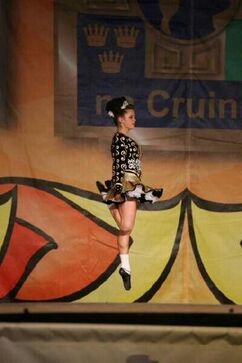 Issues with posture tend to stem from dancers not holding the correct amount of tension in their bodies. Too stiff and your movements will become jerky and awkward versus smooth and graceful. Too loose and the upper and lower body won’t appear to be in sync. Either of these issues encourage the biggest mistakes we see with Irish dancer posture: shoulders rolling forward (think what your dancer looks like hunched over their phone all day,) loose and untamed arms, bent arms, or arms pulling away from the body. But how can we encourage correct Irish dance posture? A technique we like to use in class (but can easily be utilized at home as well!) is pinning rubber circles (or paper plates) between the elbow and the ribcage. If the arm comes away from the body at all, the plate drops! This is a great way for your dancer to practice their feis performances—muscle memory is everything. The other key is core and upper body conditioning. A strong core and arms allow the position necessary for Irish dance to be held, even while the feet are constantly moving. There are so many exercises and tutorials available to help your Irish dancer with their posture! Miss Courtney suggests lateral pulses, shoulder rows, “dead bugs,” superman pulses and holds, and any core work at all! For our littlest dancers, egg rolls (and the paper plate trick) are the best starting point. Wherever your dancer starts from, these exercises and practices will not only improve their dancing, but help with their overall back health—whether they keep dancing or not! Tune in next time for a more advanced technique review, but a pivotal one as your dancer continues on their Irish dance journey: height on toes! This post is part of a series. Take a look at our last technique review, all about crossing, here. Also: check out the blog every Monday and Thursday for more posts about Irish history, dance culture, community news, and spotlights on our dancers, staff, and families—among other fun projects! And don’t forget to dance along with us on both Facebook and Instagram. 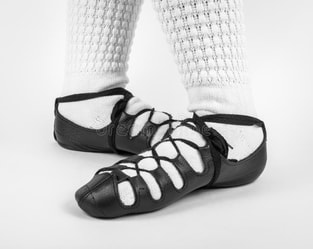 Last time, we took a look at the importance not only of turnout for the sake of technique and aesthetics, but for the safety of every dancer. This, of course, extends to other aspects of technique, including: crossing. Whether you’ve been dancing one year or twenty, crossing is one of the most basic techniques to master, as it’s the beginning and end position to any Irish dance move you might perform—one leg in front of the other. To determine what state your crossing technique is currently in, first turn out your feet (which we covered last week!) Then, starting with your heels still together, move your right leg in front of your leg without shifting the position of your turned-out foot, knee, or hip. The first goal is get your right heel touching your left toes. As you improve your turn out, the next goal would be getting your right toes to touch your left heel in the same position (with your right foot still in front.) This is the ultimate crossing goal in the Beginner and Early Intermediate levels, along with getting that first progression in every movement! As you move on to the highest grades of Irish dance, you’ll want to increase your crossing ability. To do this, you’ll want to keep moving your already crossed feet further apart—your left leg further to the right and your right leg further to the left—until you can’t move them any further. The goal for the best possible technique in Irish dance would be as much space between your shins as possible while you’re in a crossed position. However, it’s important to keep body alignment in mind when crossing, as the act of crossing can often lead to dancer to be facing diagonally instead of straight ahead. If this is happening, you want to correct yourself into a less turned out or less crossed position where you belly button is facing forward. A study of dancers across disciplines from the Clinics in Podiatric Medicine determined that 53% of dance-related injuries are of the ankle or foot (with a higher proportion in Irish dancers--83% in this specific study) citing lack of proper body alignment as one of the primary sources of said injuries. Crossing your feet may seem like no big deal, but as all jumps in Irish dance are expected to begin and end in this position, correct crossing technique is imperative to a dancer’s health and safety. Research from BYU in 2017 asserts that Irish dancers land with a force of 4.5-6 times their body weight, making proper technique while jumping one of the easiest ways to avoid injury. With the effects of dance shoes across disciplines being a relatively new area of study in sports medicine, mitigating this force with proper technique becomes paramount. There are many exercises to help improve your crossing technique, and some of Miss Courtney’s favorites include cross walks up to the mirror (to be able to see your alignment all the better—make sure to always practice with proper technique, it’s the only way to improve!), as well as floor butterflies to increase the strength in your inner thighs and glutes. Take a look at our last post in this series to see a few exercises that will help increase your turnout, too—turnout is important in every aspect of Irish dance, including crossing! The better your turnout, the better technique in your crossing. Miss Courtney also recommends mental cues while dancing to help you remember to both start and end in the correct position, such as “keep only one knee showing” or “keep space between your shins.” While the longer you dance, the more muscle-memory will kick in (read more about movement memory here!), it’s always good to have the mental cues tied to those muscle memories to reinforce this basic tenet of technique if you ever get flustered. It could save you from injury, and will wow the adjudicators! Tune in next week for another technique review—all about posture! This post is part of a series. Take a look at our last technique review, all about turnout, here. Also: check out the blog every Monday and Thursday for more posts about Irish history, dance culture, community news, and spotlights on our dancers, staff, and families—among other fun projects! And don’t forget to dance along with us on both Facebook and Instagram. 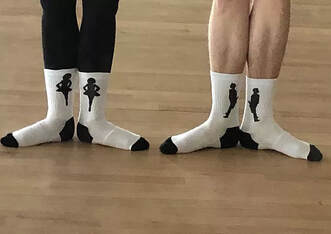 Click the image to see how turnout socks may help for home practice! Click the image to see how turnout socks may help for home practice! Welcome to technique review! In this new series of posts, we’re looking at some of the most important basics of Irish dance—from Beginner level to Championship. It doesn’t matter how many medals you may have won; every dancer needs to continuously refresh themselves on the fundamentals and continue to work on them! First on the docket: turnout. Turnout is one of the most critical tenets of dance generally, and Irish dance in particular as every movement of Irish dance is performed in a turned out position. Not only is correct turnout one of the key points noted by adjudicators on both a technical and aesthetic level, it’s also crucial for safety of the dancer. In a study published in Sports Medicine-Open in 2018, researchers concluded that improper or overcompensated turnout is one of the leading causes of injuries across dance disciplines. This expanded the conclusions published in Open Access J Sports Medicine in 2013 that decreasing the likelihood of dance-related injuries is possible with attention to proper technique and physical training. And as Irish dance’s gravity-defying jumps are performed with less cushion (both in shoes and technique) than other forms of dance, the need is all the greater to know what proper turnout is and to practice on improving it! Turnout in dance refers to an outward rotation of the leg, starting from the hip and continuing through the thigh, knee, ankle, and foot. The goal is a “perfect” 180 degree turnout—a straight line running from the left toe, through the left foot to the left heel, then through the right heel, foot, and toe. While some dancers win the genetic lotto and start with close to that 180 degree ideal, most dancers will have to continuously work on their turnout to achieve this! First: what’s your turnout like naturally? Stand with your feet together, heels touching, and then try to make a V-shape with your feet, turning the entire leg from the hip while keeping your heels together. You’ll know if you’re overcompensating your turnout through a number of signs, including: discomfort, knee position not matching foot position, and a slight (or not so slight) forward roll on the inside of your foot. Any of those signs and you’ll want to close your V-shape into a narrower position—as we said before, dancing when overcompensating puts dancers at a much greater risk of injury (and your teacher won’t be happy either!) But how does one improve their turnout? Like everything else in Irish dance: practice, practice, practice. The most important considerations are increasing the strength of your hip flexors and maximizing the range of motion in your hip joints. Exercises like clams, seated leg rotations, and parallel/turn out drills (among many others you’ll learn in class!) are the key to increasing that range of motion and strength. But none of this will help unless you also stay aware of your turnout while in motion while dancing. This focus can be difficult to maintain while you’re counting along to the music in your head and remembering your choreography, so Miss Courtney recommends giving yourself mental cues! Learning to remind yourself “heels forward, “toes out,” “show the inside of your heel,” or something similar while you dance is as important as the turnout itself–otherwise all that work won’t show in your dancing! Sound like a lot of extra work on top of learning all that choreography? It is! But because of the safety issues (here’s another study looking specifically at injury in Irish dancers that correlates improper landing technique with injury,) not working on your turnout may slow down your progress as an Irish dancer. Not only is it a basic principle of any dance you perform, but Miss Courtney and your other teachers care about your safety first and foremost, and may choose not to teach you more advanced moves until your turnout improves. As, for example, landing jumps or leaps on a straight foot can lead to severe ankle sprains or even cause ligament damage that can take years to fully overcome, you can’t progress without good turnout! This post the first in a series. Check out the blog every Monday and Thursday for more posts about Irish history, dance culture, community news, and spotlights on our dancers, staff, and families—among other fun projects! And don’t forget to dance along with us on both Facebook and Instagram. |
SRL NewsFind all of our latest news on our Scoil Rince Luimni Facebook page! Categories
All
Archives
August 2022
|
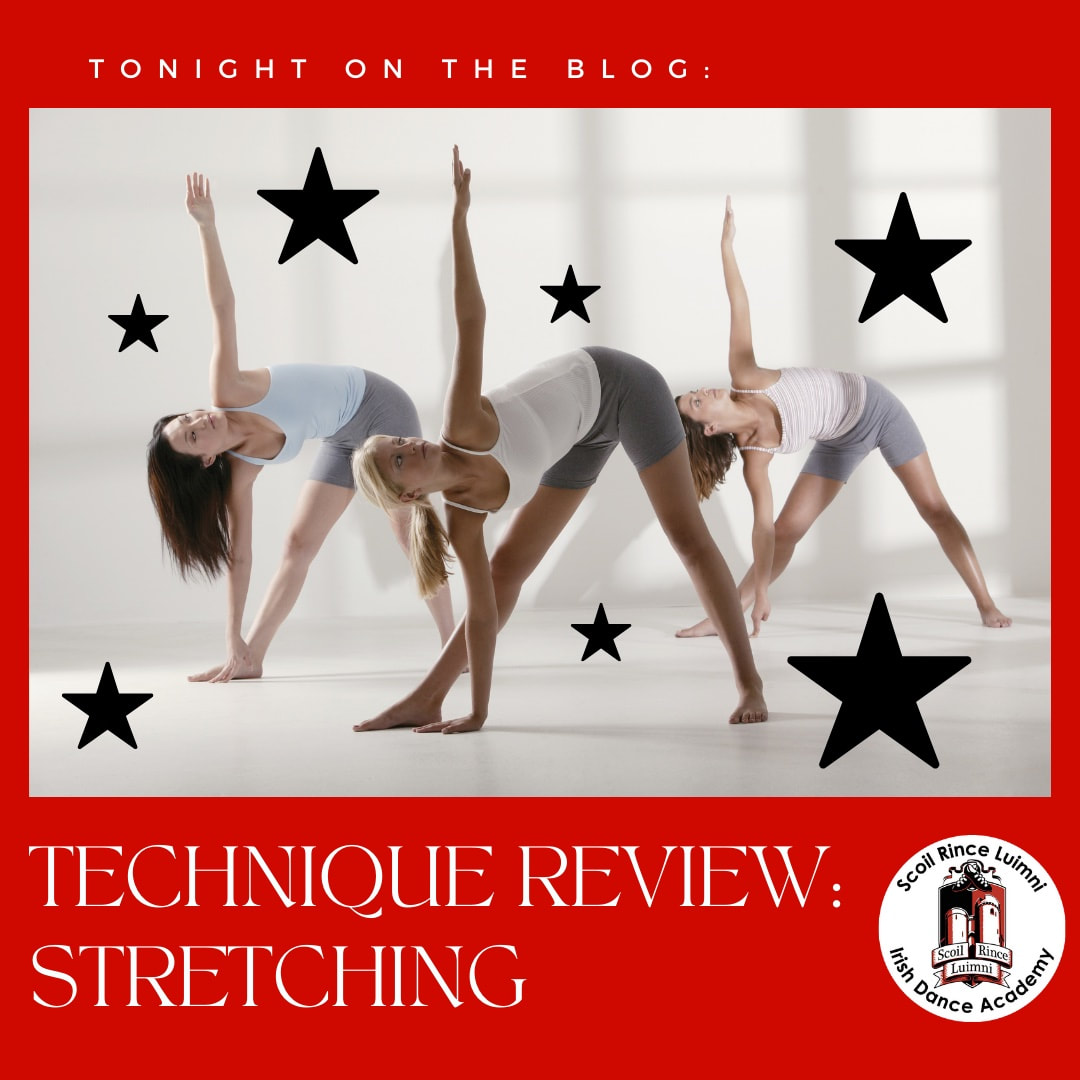
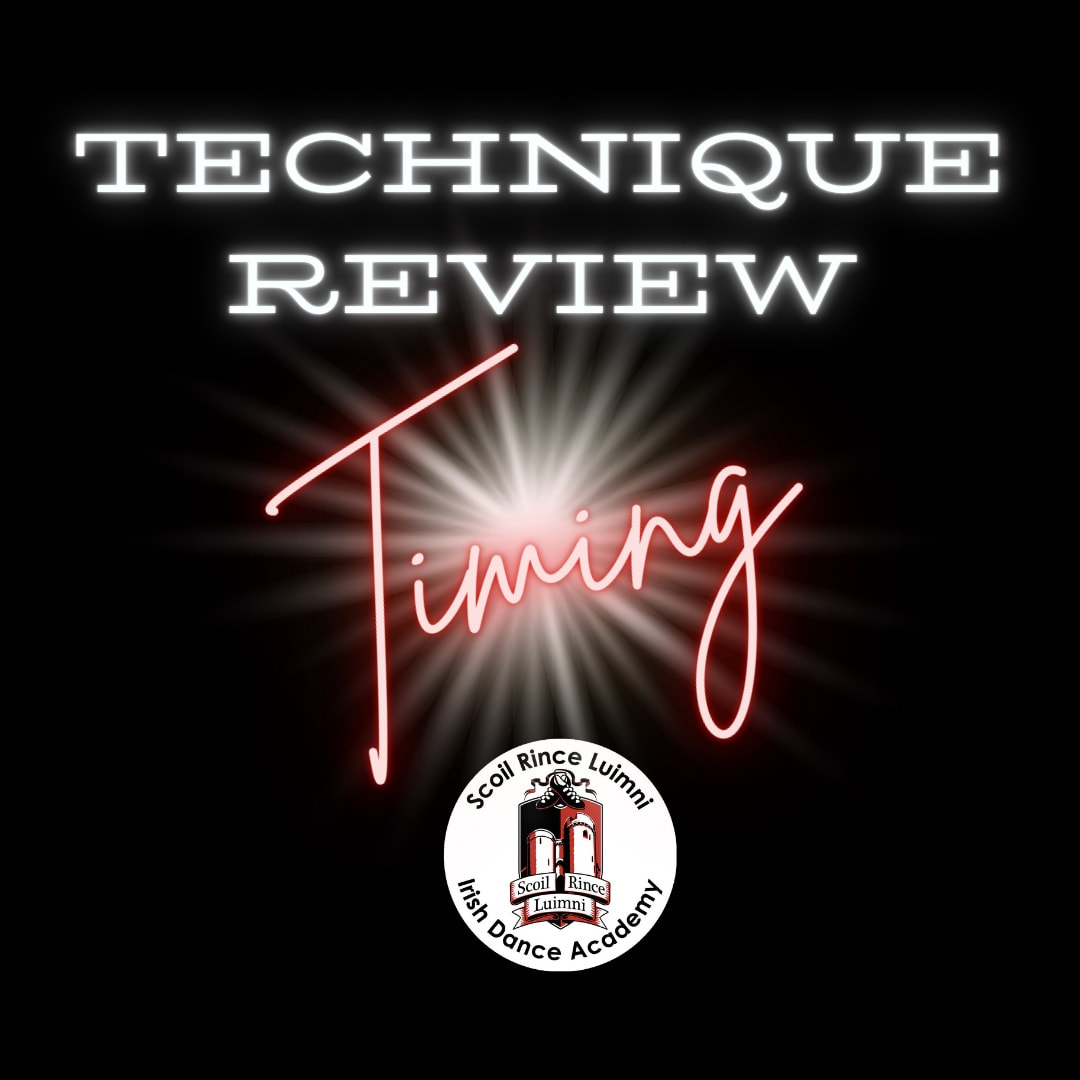
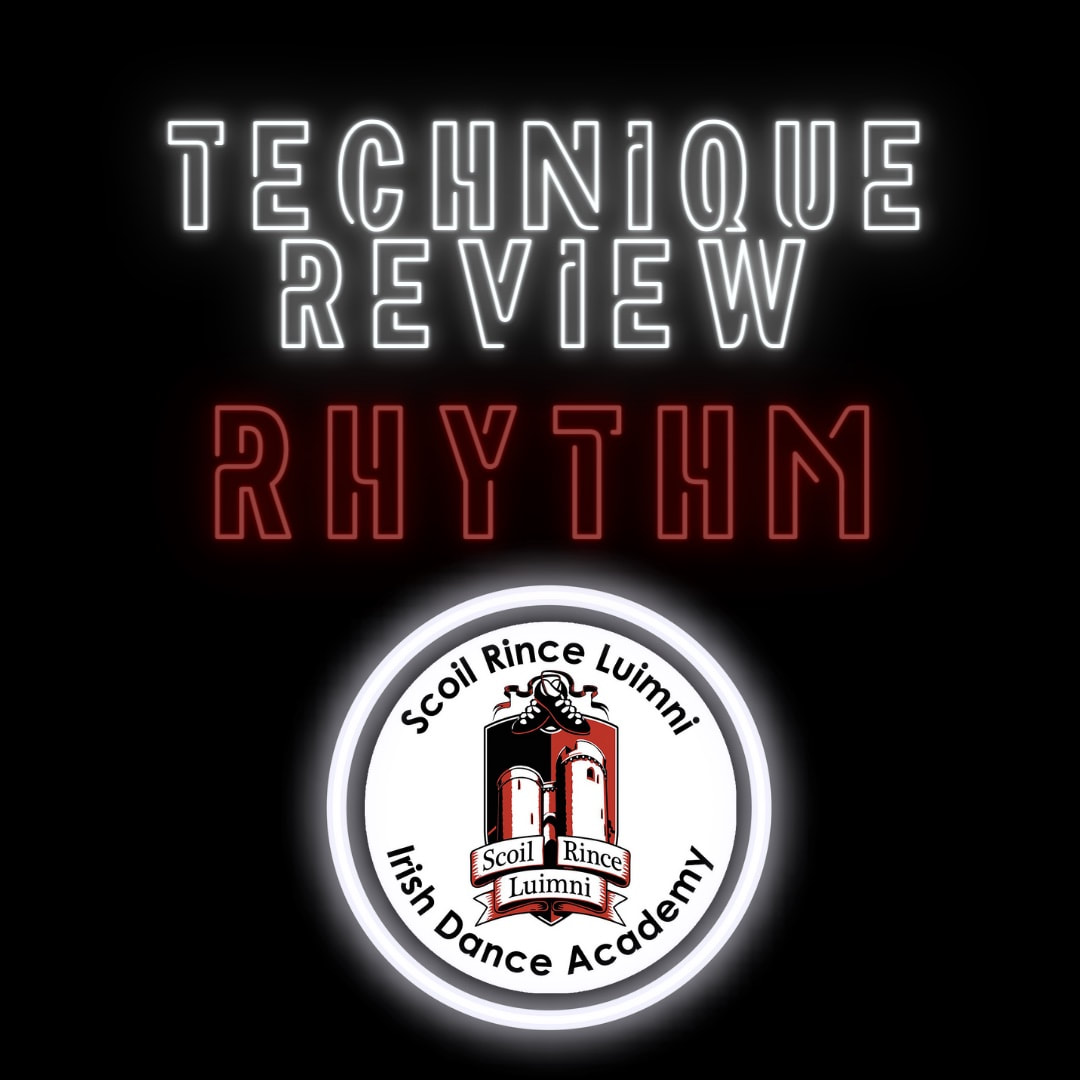
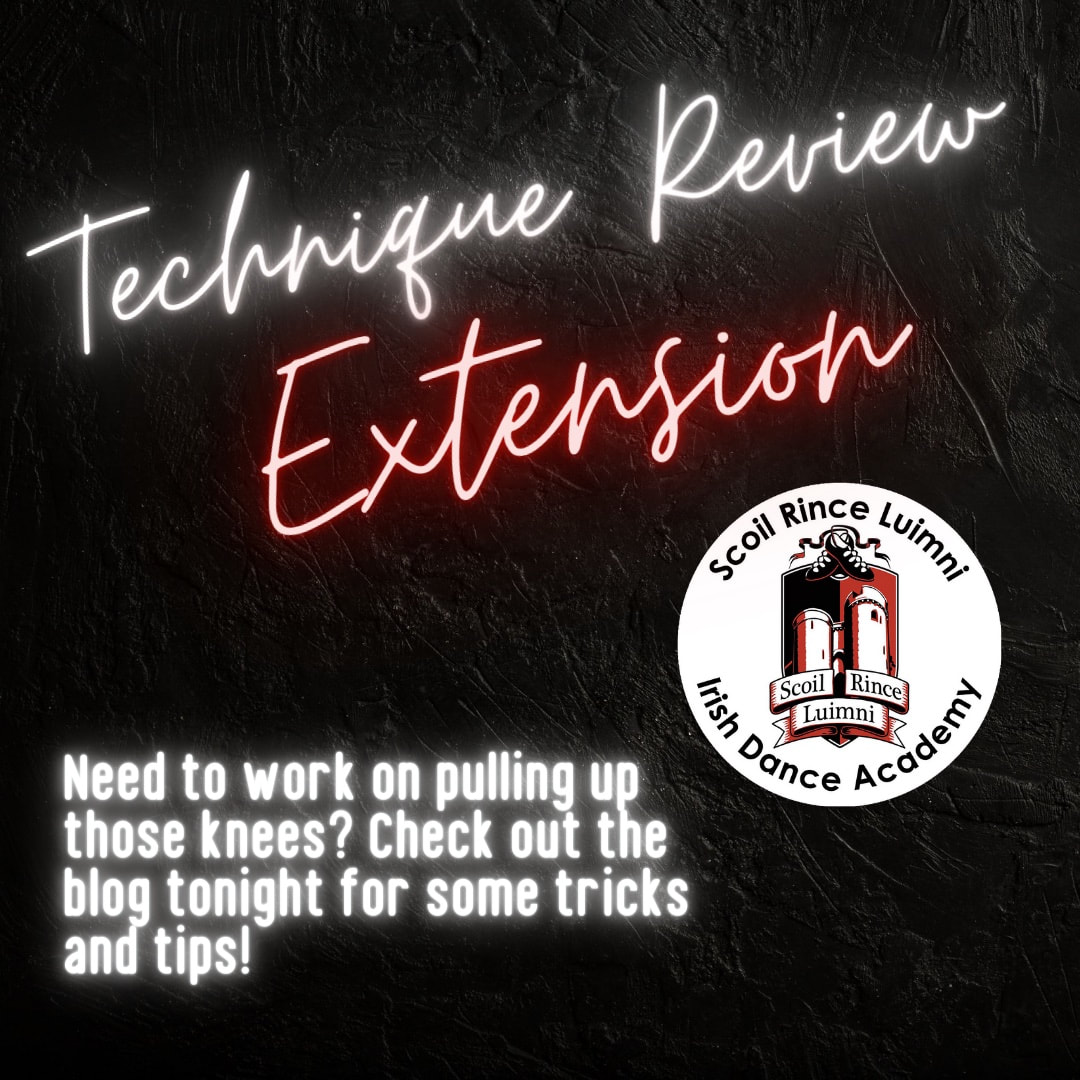
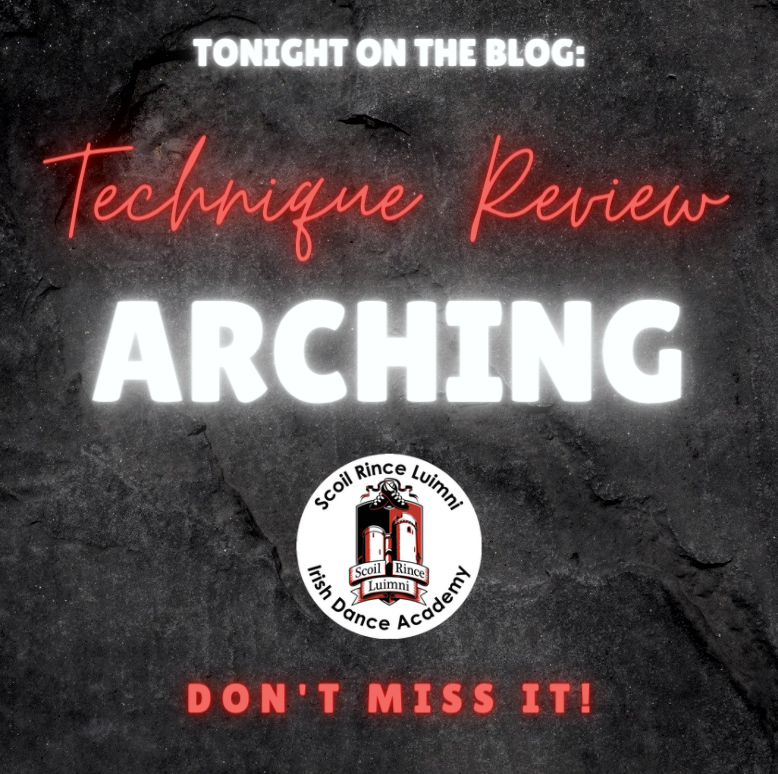

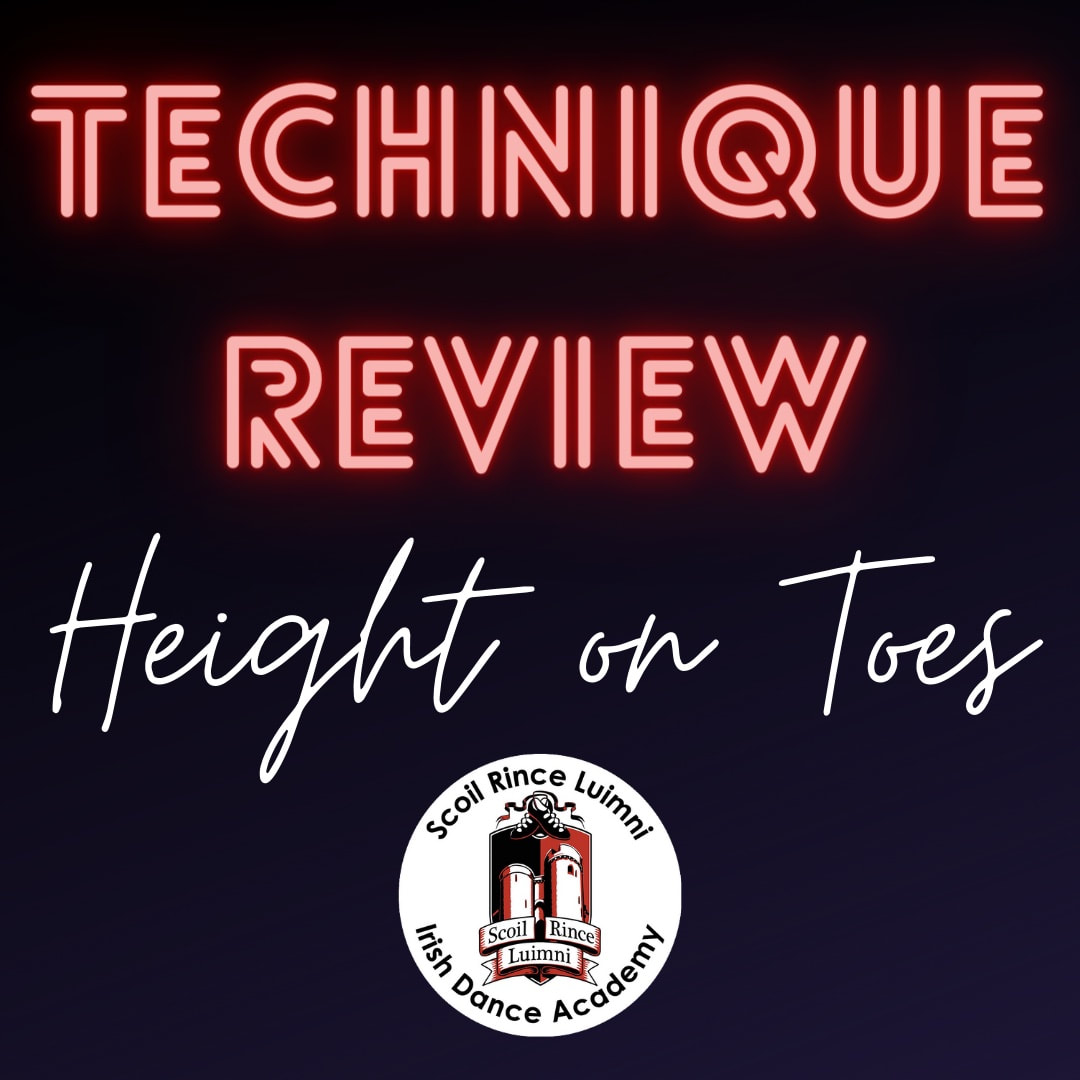
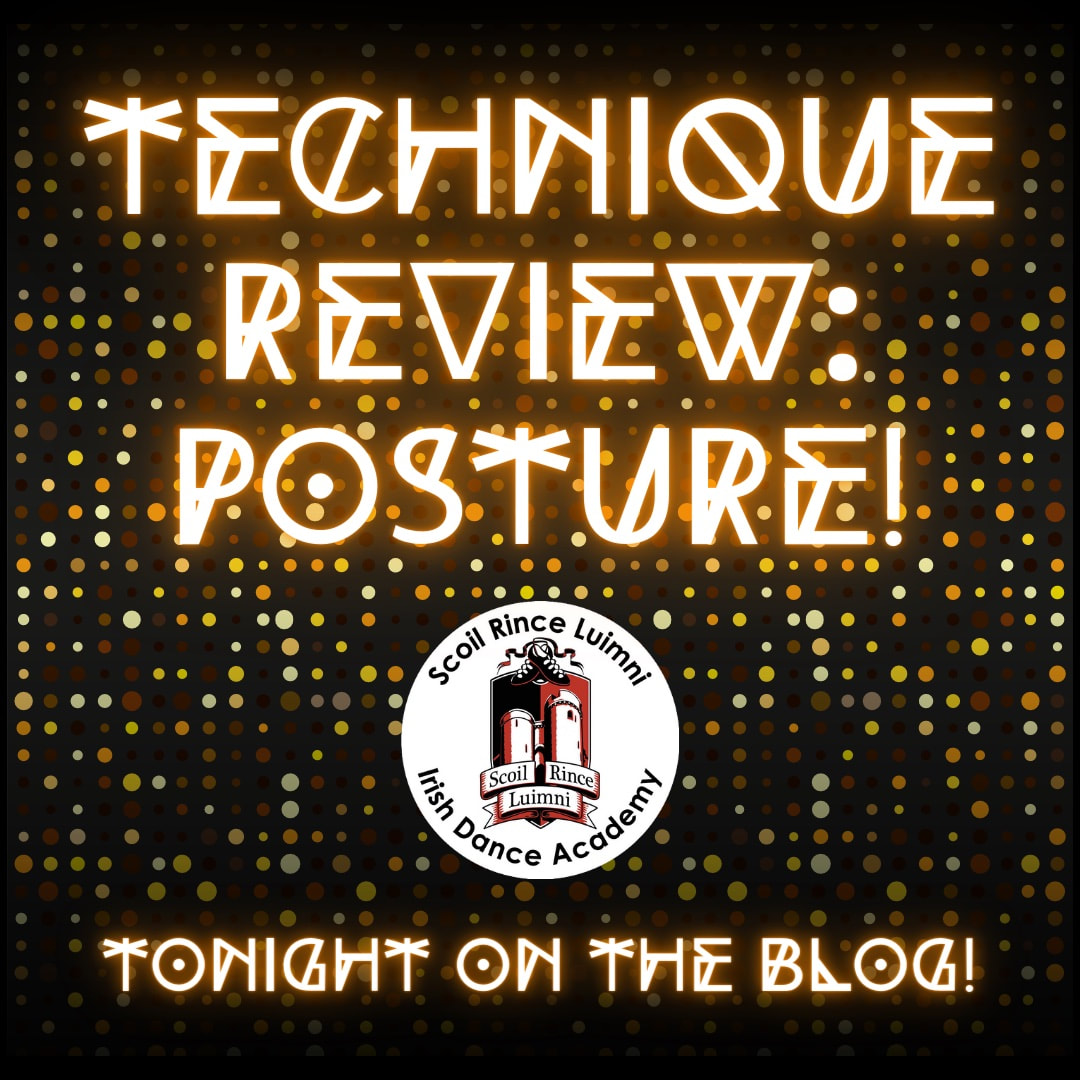
 RSS Feed
RSS Feed